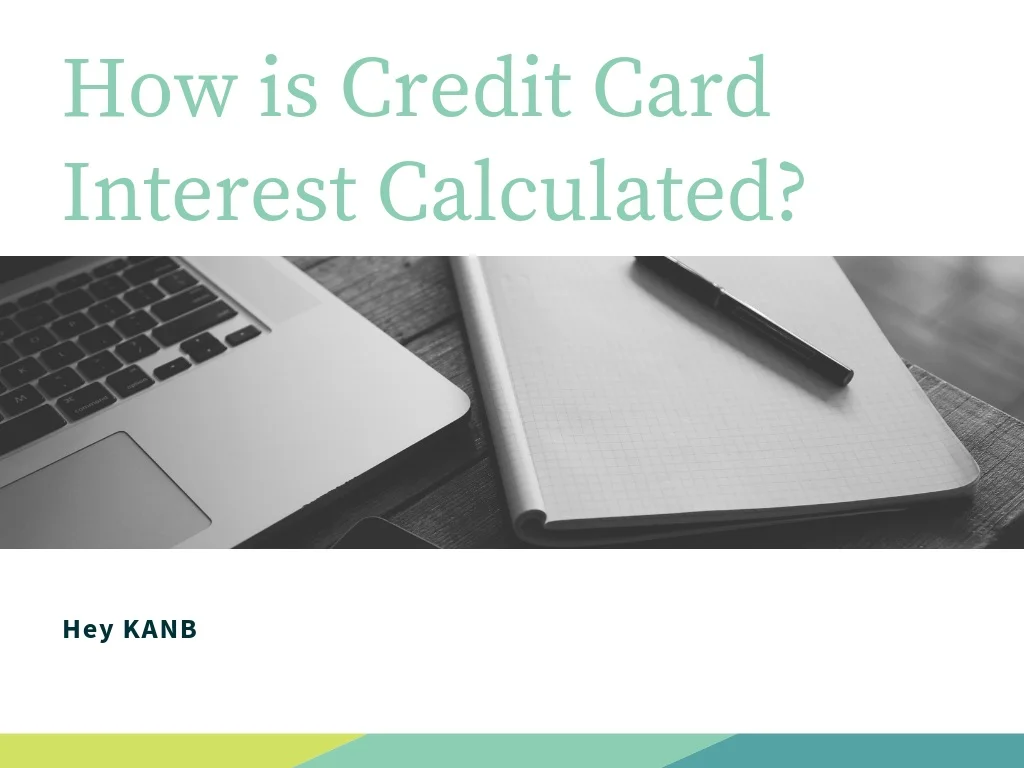How is Credit Card Interest Calculated?
Who here has a credit card? Or maybe more than one?
Yep, I’m guilty too.
And when I got my first credit card, I didn’t check the interest rate. What?!?
No, really. I didn’t care what the interest rate was. My second credit card? Still didn’t care. I figured, if I pay it off every month it doesn’t matter. While that may be true, I’ve since started paying attention to the interest rates on my credit cards. And you know what? They are ridiculous.
My lowest interest rate is 16.99% while my highest interest rate is 25.99%. WOW!
Does that seem high to you? Or is it just me? It is high. That’s how the credit card companies make money – and any cards you have that have rewards generally have higher interest rates. Why? To help pay for those rewards.
Here’s the real kicker though – that Annual Percentage Rate (APR)? It isn’t what you actually pay. Just because the APR is 24% doesn’t mean you pay 24% annually. Interest is charged on a daily basis, and only if you carry a balance from one month to the next. If you pay your card off every month, I applaud you. If not, keep reading because this bit of knowledge can help reduce how much you pay in interest.
What are you really paying in interest?
1. Calculate your daily interest rate
Since companies use the APR to charge interest daily, take whatever your rate it and divide it by 365. So a 24% APR is 0.0658% daily.
2. Calculate your average daily balance
To do this you’ll take your unpaid balance from the previous month, then add the daily balance of every day of the month together and divide that by the number of days in the billing cycle. ,The daily balance will change if you charge something to your card or if you make a payment. If your balance doesn’t change at all throughout the month, then that is your average daily balance.
So, let’s say you carried a balance of $1,500 from last month. Then you spent $800 on the 15th and paid $1,000 on the 18th.
For 15 days the balance was $1,500. (15x1500=22,500)
For 3 days the balance was $2,300. (3x2300=6,900)
Then you made the payment and for the last 12 days the balance was $1,100. (12x1100=13,200).
Add those balances together, then divide by the days in the billing cycle to find the average daily balance (42,600/30=1,420)
That means the average daily balance is $1,420.
3. Calculate your monthly interest
Multiply your daily interest rate that you calculated in step one by the number of days in the billing cycle, then multiply that by the average daily balance we found in step 2. The final number is the amount of interest the credit card company charges you that month.
So, with the example above: 0.0658% x 30 days x $1,420 = $28.03
You pay almost $30 in interest for a 30-day billing.
But wait! There is a chance that your interest compounds.
What’s that mean?
It means that they will take your daily balance, charge you interest on it, and the next day they will charge interest on both the balance and on the interest charged the day prior. What!?! Yes. Really. While that may be a very small amount – it can really add up. Especially if you carry a balance on your credit card for several years.
Now that you’ve seen why you can end up paying more interest than advertised in the APR, you may want to know the best way to stop the insanity.
The best way – pay off your credit card in full every month.
The second-best way – pay more than the minimum payment every month and pay more than once a month. So, if you can’t make the full payment on the first, but you have $20 dollars, pay $20 towards your credit card, then after you get paid again you can pay another $20 or $30 towards your balance. By paying a partial payment early you can lower your average daily balance, and that lowers the amount of interest you are charged.
Confused?
If you have $1,000 and want to make a $100 payment. If you pay on the 20th day of the billing cycle, your average daily balance is $966.67 but if you pay $50 on the 10th day of the billing cycle and $50 on the 20th day, your average daily balance is $950. If your APR is 24%, you just saved $0.33 just by paying half your payment a few days early. The more frequently throughout the month you pay, the more you can save in interest charges.
Of course, the best way is still to pay off the full balance if you can.
Granted, I’m not always good at that. A few months ago, I had a wedding and I may have overspent on the credit card – and that was not a bill I was able to pay off in full. It happens. The key is to not let it become habitual, or if you’re in a situation where you aren’t sure you’ll ever get those cards paid off – to just keep chipping away at them. And now you can chip away at them more effectively by lowering your interest charges.
I’m not saying I’m an expert, but I have tried to educate myself in an effort to save money – and to pay off those credit cards with as little interest as possible.
As always, I am but a work in progress.
Cheers.




